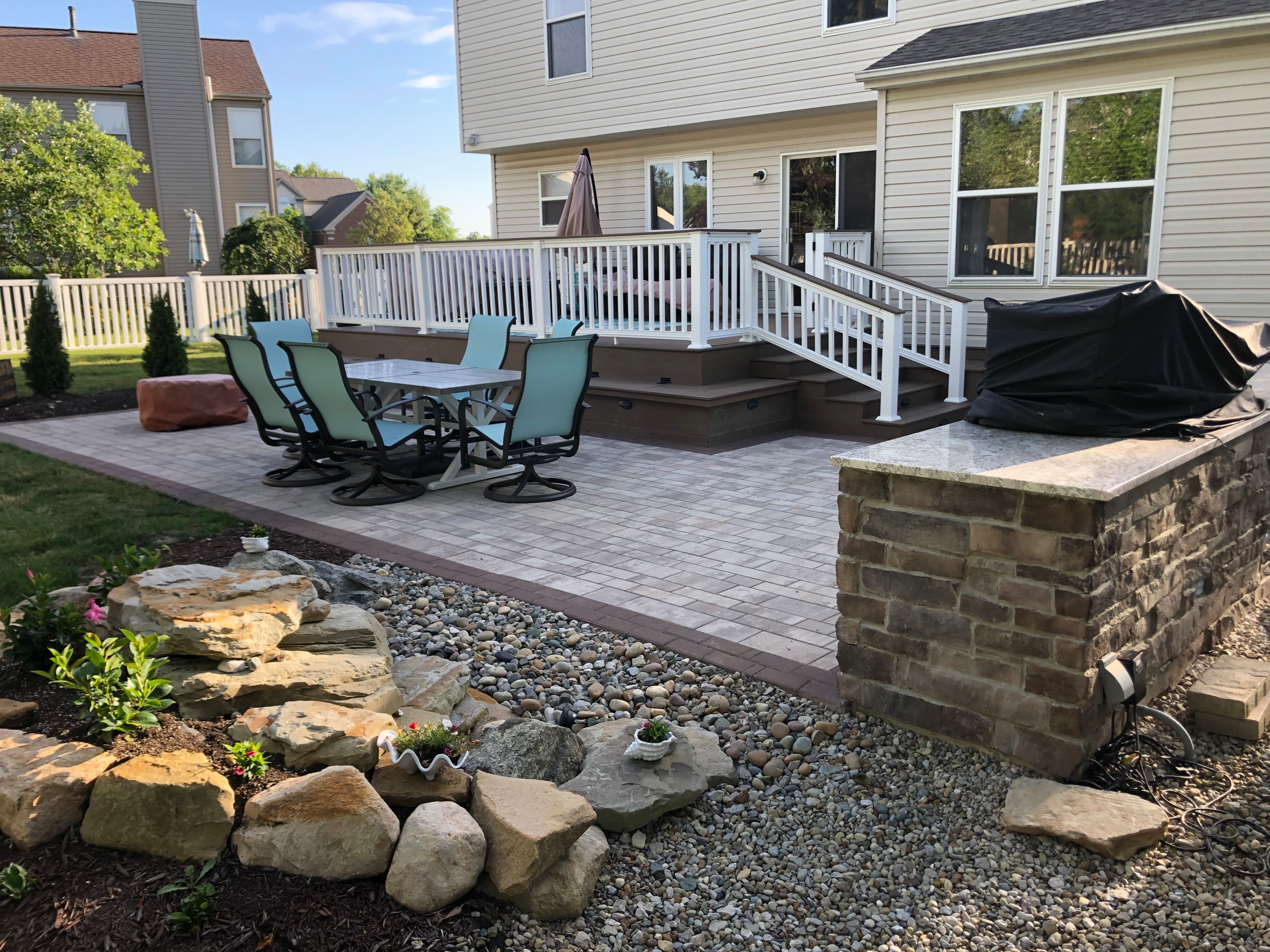Paver Patio Maintenance

Spring
While the majority of Unilock products require little maintenance, there are a number of preventative steps that can be performed each spring to ensure that your project keeps its pristine appearance throughout patio season. Examine for “creep” – this is where pavers push out as a result of winter stress, traffic or edge restraint failure – as well as dips, deformations or stains. Should you discover any of these problems, they are fixable; speak to your contractor or reach out to us for solutions. Wash your paver surface with a simple soap and water solution and top up jointing material if necessary.
FALL
While the leaves changing colors in the fall is a beautiful sight, the stains they leave behind on pavers can be an eyesore. Clean any debris, and remove any planters, barbecues or furniture that may leave behind rust marks.
WINTER
Metal blades on plows or shovels may scratch the surface of your pavers. It is recommended you use plastic shovels or protective plastic blades on your plows or snow blowers. Although Unilock products are resistant to de-icing salt, it is strongly advised to use calcium-based products or rock salt (sodium chloride) to melt ice. Note: Avoid magnesium-based de-icing products as they are very aggressive and may cause damage to the surface of pavers.
STOP WEEDS BEFORE THEY TAKE ROOT
Weeds do not grow up from the soil below. Instead, dirt and weed seeds blow in from adjacent lawn and garden areas and may germinate in between the joints. Keeping the joint sand topped up near the surface will help the weed seeds to blow over the joint and not into the joint. IN THE PAST - Basic sand was the only jointing material available. Rain would erode the sand if it wasn’t replaced frequently, leaving parts open to vegetation growth. TODAY - There are new types of sand-stabilizing compounds and polymeric jointing materials that relieve homeowners of this maintenance worry.
For more Resources like this visit Unilock.com
